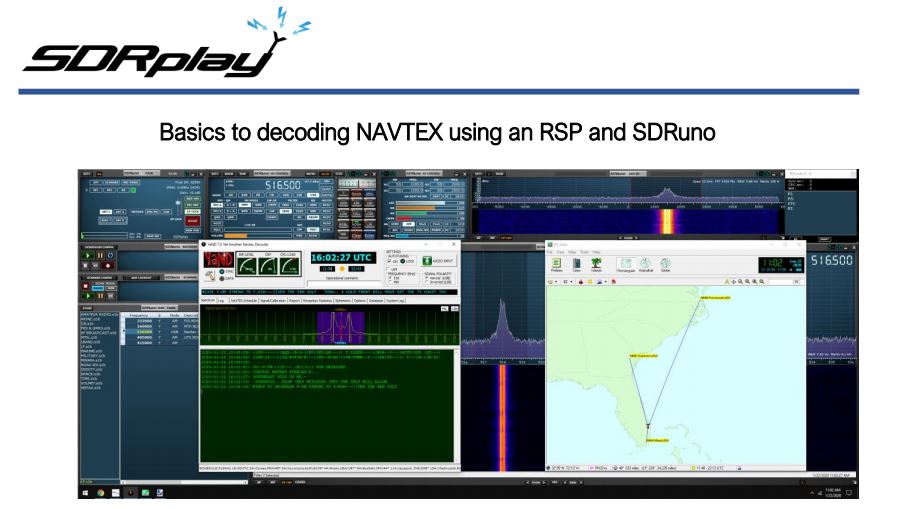Many thanks to SWLing Post contributor, Mike Ladd with SDRplay, who shares the following PDF primer on decoding NAVTEX with an RSP series SDR.
Click here to download “Basics to decoding NAVTEX using an RSP and SDRuno” (PDF).
Thanks for sharing this excellent guide, Mike. Without a doubt, SDRplay has some of the best documentation and primers in the world of radio. Click here to check out more.
Also, check out Mario’s post, from our archives, which discusses decoding NAVTEX, RTTY, and Sitor B.


YAND is the one I use. Hope the USCG backs off from their plans. Old-school wireless is much more reliable in the event of an emergency, and for hobbyists it’s for the most part free.
As an aside, fldigi is my preference over MultiPSK for WEFAX; while both have slanting correction adjustment options, fldigi’s dashboard is easier to use for that.
Steve Handler’s book “Just the FAX” is a great reference for WEFAX listening.
Thanks Thomas for referring to my previous article on digital ute modes.
The USCG has said that there equipment and software are old and they don’t seem to be inclined to want to upgrade. Their broadcasts seem slow (lots of empty lines or lines with just a small amount of info in a larger message). They also seem to decode somewhat poorly (it may be a case of too much signal of some of them) and they constantly abuse their time slots….both by going over the 10 minute allotted (by as much as 30 minutes) and also out of their assigned times. Many European stations are much more efficient with their messages and mainly keep within their time slots.
i been using fldigi to decode navtex, it does it quite well, what fldigi is awful at is wefax, it is terrible at wefax and the images are all skewed and i tried to tweak the settings and it can never come in straight
wefax images are for hurricane and weather maps of the atlantic region in during hurricane season on 8502 Khz
a good wefax app for Linux would be nice
> “… what fldigi is awful at is wefax, it is terrible at wefax and the images are all skewed …”
Drifting off sync (i.e. sloping sides), or big jumps (several lines are in sync, then there’s a sudden jump and following lines are in sync to *that*, and so on and so on)?
The former is normal; in WEFAX, the only real guaranteed sync is in the pre-image phasing signal – decoders can *try* to extract line sync from the “black tape” at each side, but that’s not actually part of the spec & isn’t consistent (between broadcasters, or even images from the same broadcaster). Hence the slope/offset correction factors in all decoders, including fldigi.
The latter is a problem that’s either due to a complete loss of sync (e.g. during deep fades or frequency drift long enough to wipe out several lines) or, if the picture is otherwise clear without noise/fading, an issue at the broadcaster’s end (as was the case a couple of years ago with the USCG/NOAA WEFAX/Radiofax broadcasts, and occasionally with others).
Unfortunately the USCG is trying to kill off NAVTEX! Has anybody heard how far they are down the road of doing this, or have they backed off under an avalanche of comments? Now that IridiumGo is within the reach of many offshore (Blue Water) sailors the USCG seems to consider that a $500/month service is better than a free one.